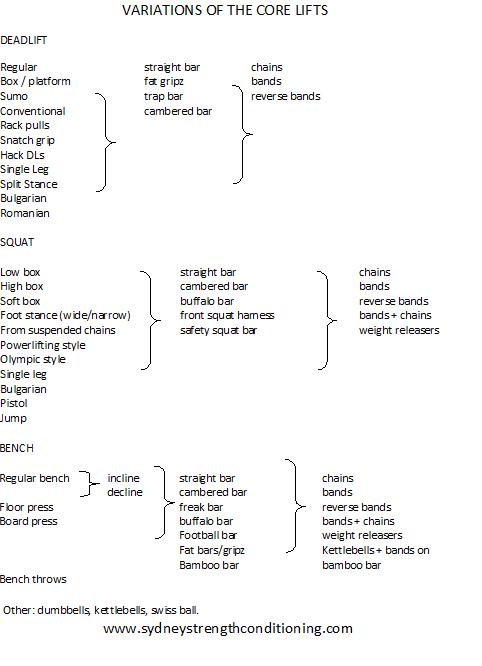In the pursuit of fitness goals, it’s crucial to recognize that not all strengths are created equal. Understanding the diverse facets of strength is essential for optimizing training routines and achieving desired outcomes. From explosive power to endurance and stability, each form of strength plays a unique role in enhancing overall physical performance and resilience. This article explores the multifaceted nature of strength, shedding light on its various dimensions and emphasizing the importance of a well-rounded approach to training.
Confused about your training approach? As a strength coach, I often encounter these common questions:
- Is cardio ruining my strength gains?
- Should I focus solely on ‘functional’ training and ditch isolated or machine-based strength exercises?
- Can I train purely bodyweight on a matted floor?
Beyond exercise type, questions arise about: - Optimal rep ranges
- Ideal rest intervals for muscle gain or fat loss
- Choosing between completing sets, supersets, or circuits
If you’re lucky, you’ll consider how all this fits into a periodised program which is fairly rare to see with standard gym junkies. Even the high profile strength and conditioning coaches and sports medicine professionals debate over the best methods for training athletes.
Bodybuilder versus Gymnast Strength
Muscle size doesn’t always equate to strength. Take a gymnast, for example—they boast a lean, compact frame but exhibit remarkable specific relative strength. In contrast, a bodybuilder may possess substantial muscle mass and an impressive physique, yet they may struggle to replicate a gymnastics routine. While bodybuilding programs primarily focus on body shaping and muscle size increase, they often neglect specialized strengths like absolute/maximal strength, relative strength, endurance strength, reversal/reactive strength, explosive/speed strength, or accelerating strength.
Linear Periodisation
People typically believe in the linear progressive overload system, where the same exercises are chosen each week in the hopes of increasing the weight as the body gets stronger. The problem with this approach is that there comes a point where the body accommodates, and no further gains can be made. If you are a typical gym enthusiast, ask yourself honestly: how long have you been pressing or lifting the same weight? How long have you been using the same exercises every week because they are your favorites? Which exercises do you avoid because you don’t feel proficient at them? And is your body reflecting the results you desire despite the hours you invest in the gym?
When the progressive overload principle is applied in a periodized program, athletes beginning a conditioning program must develop a fitness base with longer, less intense workouts and progress to more sport-specific, shorter, intense activities. This overload will take place over the course of many weeks.
A typical periodization system looks like this:
Base Corrective and Strength Endurance Work
↓
Hypertrophy
↓
Strength
↓
Absolute / Max Strength
↓
Power
↓
Deload week / Off season
↓
Start Over
Or, more commonly adopted, individuals stick to the same 8-12 rep range (considered a hypertrophy rep range) and simply aim to increase the weight each week, often resulting in fatigue and injury. The issues with this linear periodization system include:
1. When you neglect a certain type of strength for 2 weeks or more, something called detraining occurs and your gains in that specific strength phase start to decline.
2. You may not reach the weight you were hoping to reach in a given time period (usually 2-3 week period), yet then have to change to a new phase, forfeiting the potential you possibly could have reached.
3. This linear system can also be a problem if you are, for example, an MMA fighter and receive only 3 weeks notice before a fight. If you are only halfway through a linear periodisation system, you will be underprepared. The other issue is that you may have already peaked. This can be true also for Surfing athletes who are required to compete several times throughout the year.
Congugate Periodisation
The answer is, via wisdom of Louie Simmons, training via the Congugate Method. The Congugate Method avoids the law of accommodation due to variety of exercise stimulus and allows you to train maximally throughout the year.
The 3 basic methods to achieve strength gains are;
- Max Effort Method – where the core lift is changed every 1-2 weeks.
- Dynamic Method –where the core lift is changed every 3 weeks
- Repetition Method –where the exercises are changed each week
There are various ways to diversify your exercise program. Here are some of the many ways you can utilise the Conjugate Method:
- Change the bar (eg. Straight bar, cambered bar, safety squat bar or yoke bar, buffalo bar, bow bar, zercher squat bar, trap bar).
- Add weight.
- Add bands.
- Add chains.
- Combine bands + chains.
- Change the starting position (eg. Starting the deadlift from the floor, pins or from a hanging position.
- Change the nature of the contractions (focus on concentric, eccentric, isometric).
- Change the speed of the movement by altering the weight (always pull/push with max speed if you want to get strong! Moving slow will only lead to greater DOMS and hypertrophy, not necessarily strength. You also lose the stretch reflex which is beneficial in producing a more powerful concentric contraction).
- Change from bilateral to unilateral movement.
- Change rest periods to alter the metabolic effect (eg. Short rest periods <45sec are effective in increasing blood lactate levels which serve to increase growth hormone levels, increase the ability to increase muscle size and reduce fat).
- Change the number of reps and sets (eg. Very high reps with low load serves to increase tendon and ligament strength which may be beneficial for increasing their capacity to store kinetic energy for explosive strength and reversal strength).
- Change the angle that your body pulls/pushes to change the leverage and hit different muscle groups.
Get a qualified online coach to teach you these before you go out these blindly hoping to master these techniques without professional instruction!

In conclusion, understanding that not all strengths are equal is crucial for designing effective training programs tailored to individual goals and needs. While muscle size is often associated with strength, specific relative strength, endurance strength, reactive strength, and other specialized forms of strength play significant roles in various athletic endeavors. Instead of relying solely on linear progressive overload, incorporating periodization and diverse training methods like the Conjugate Method can optimize strength gains and prevent plateaus. By prioritizing functional strength over muscle size and adopting a holistic approach to training, individuals can achieve their fitness goals more effectively and sustainably.
